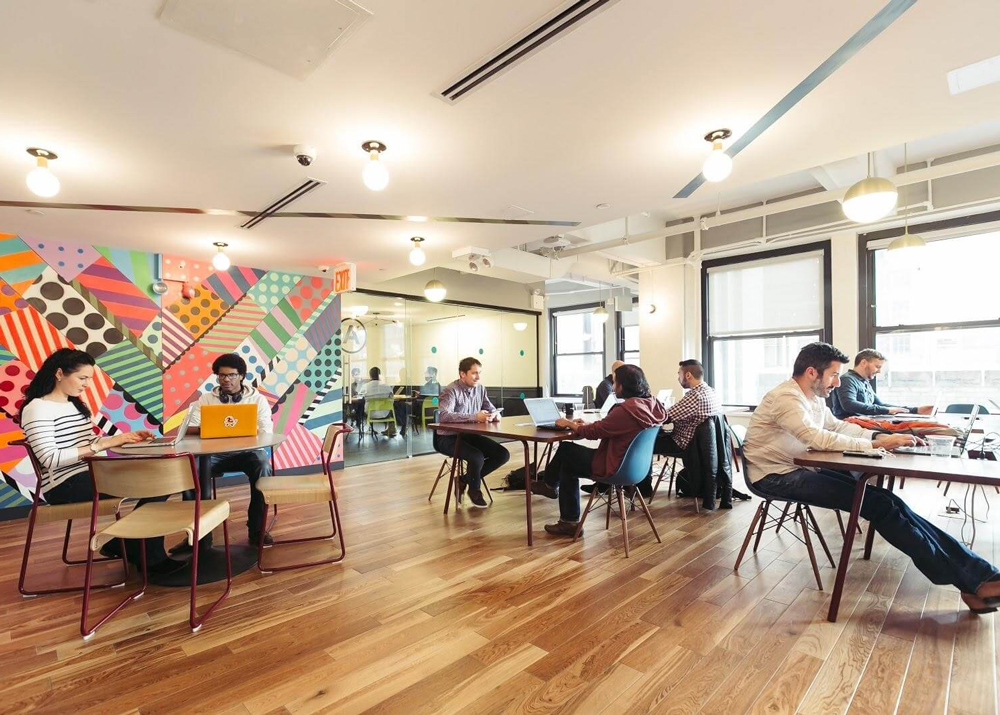A software developer, an HR manager, a video games designer and a social media enthusiast are walking into a bar. And now the bar becomes a coworking space.
In reality, the first idea of coworking space – which paved the way to the craze adoption of the flexible office concept by companies – was born in 1995. Back then, 17 computer engineers from Berlin created one of the first-ever “hackerspaces” to exchange ideas and codes, and to meet like-minded people.
It took seven more years for this idea to evolve into what we have accustomed to call coworking. In 2002, two Australians set up the first true coworking workspace in the world in Vienna. It now houses various freelancers, startups, consultants, and even architects.
What do we have now?
In 2019, there were nearly 19,000 coworking spaces and more than 30,000 flexible workspaces globally, according to Statista.
And in 2020 we faced the COVID-19 pandemic and economic recession. The world of work has dramatically changed and will continue changing further.
No one could deny that the 9-to-5 in an office environment is dead. The most popular option now is when people can use the central office from time to time. This enables employers to significantly cut their estate costs, while employees can easier maintain work-life balance without spending extra time to get to work.
That’s why coworking or flexible office space is now a global trend with a market value of over $26 billion. Let’s sort out what benefits this way of working can bring:
- A chance to save employees from the home office routine. Yes, the home office has become a new reality for many, and coworking spaces are used mostly by remote workers. However, there is always a need for a quiet place to hold a conference call with clients, collaborate on a group project or just to escape from the loneliness that often drains productivity. A flexible office comes to the rescue! Employees have the opportunity to choose how they work and when. As a result, motivation does not disappear and productivity is going up.
- An opportunity to significantly reduce costs. Actually, it’s the main benefit for employers. How does it work?
- You can rent a smaller but more high-class office to impress potential clients and top talents;
- Flexible terms – no need to sign a traditional rental contract for a year or more, which means a smaller commitment and less risk;
- On-site manager – any issues can be quickly addressed, while crucial requests are processed immediately;
- In a flexible office, staffing is covered by a provider with all-inclusive services — no need to hire extra people to restock printers, welcome guests or clean. You can spend your time and energy on business needs instead of tiny office issues;
- No costs for unused space. Deals with landlords often include more space than a company actually needs. Coworking spaces allow companies to customize their coworking plans, using up as much space as they need, or as little as they need.
- More opportunities for outsourcing staff. Coworking spaces are also a habitat for freelancers, contractors, and independent professionals. This could be advantageous to any large company, as more and more businesses appeal to independent contractors, rather than hire more full-time workers to handle the workload. Coworking spaces are a great place for companies to scout potential independent professionals.
Are there any disadvantages in flexible office?
Yes, drawbacks and risks do exist, although there are not so many of them.
- Employees might lack enough discipline and willingness for self-governing. People unable to find their own groove in a flexible environment can quickly fall behind, and the flexibility can become more a burden than an asset. Employers should be alert in case of any problems like missed deadlines, communication problems or lack of awareness;
- A flexible work environment also needs to be a control point on the part of facility managers. The effectiveness of employees’ work often depends on established rules and processes for how employees interact with the workspaces. Do not forget to pay close attention to this aspect in order to avoid interruptions in the work process;
- The problem of supervising. Once going for a flexible workplace, you lose familiar tools to supervise employees’ efficiency. Think in advance how to manage employees, track their contributions and working hours. For a flex concept to work, it needs proper oversight.
Conclusion
The main idea is now clear – the traditional office is now something that many companies are drifted away from. Whether you choose a coworking space or a flexible office – you choose improved productivity, better morale, work-life balance, and much lower costs. However, to enjoy all these benefits of a flexible office, you should mind the need to research new tools to supervise employees, track all changes and effectiveness during the transition period and the need to have established rules and processes within a flexible facility.



